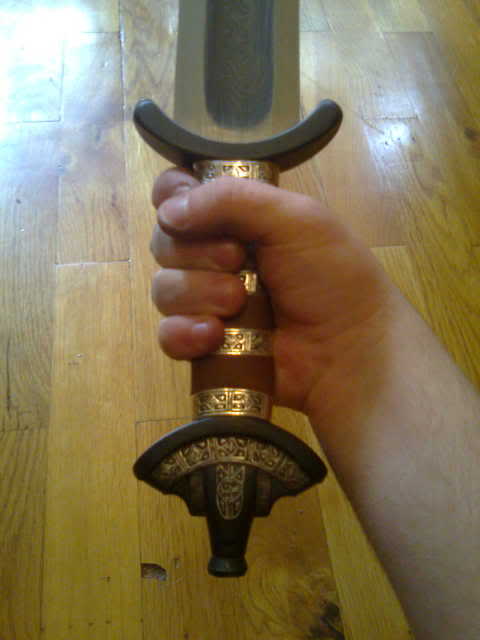
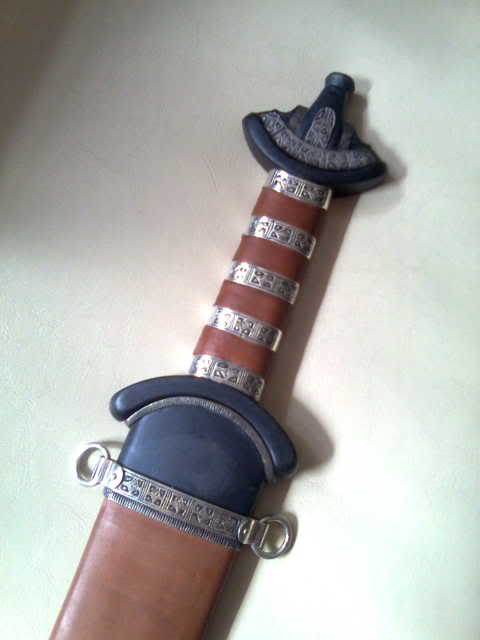
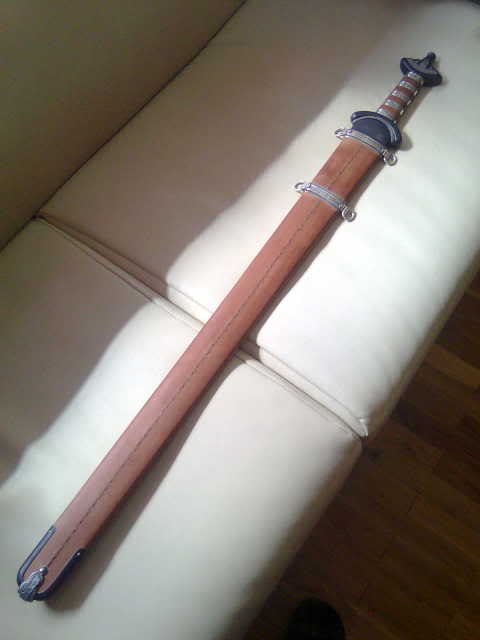

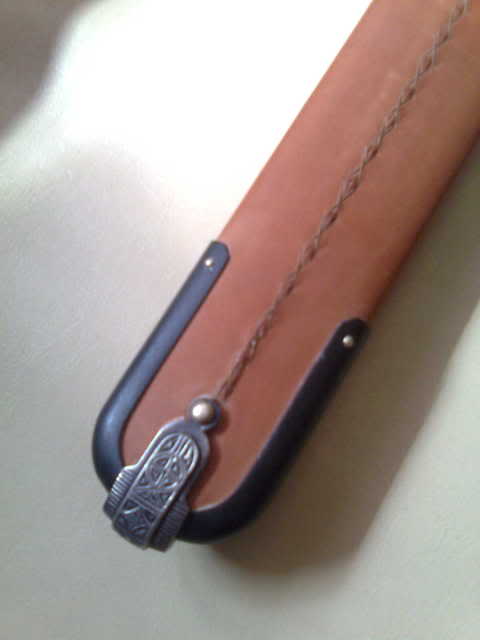
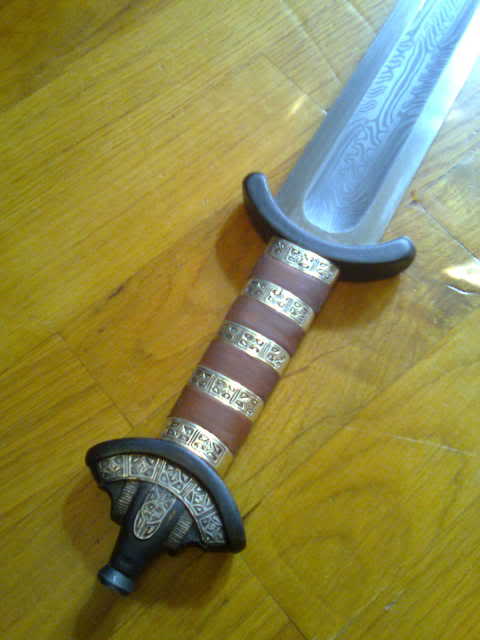
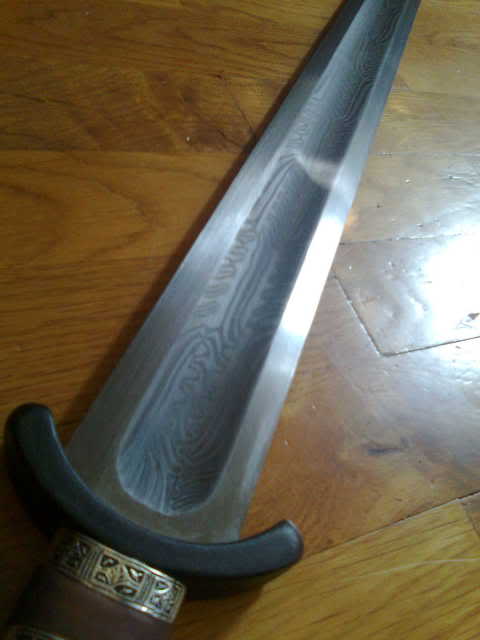
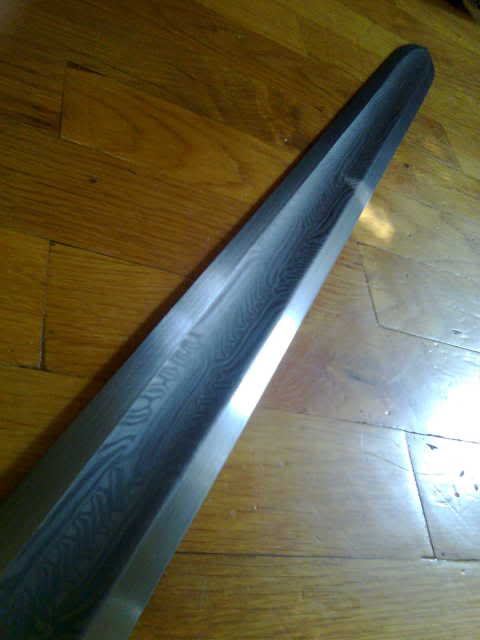

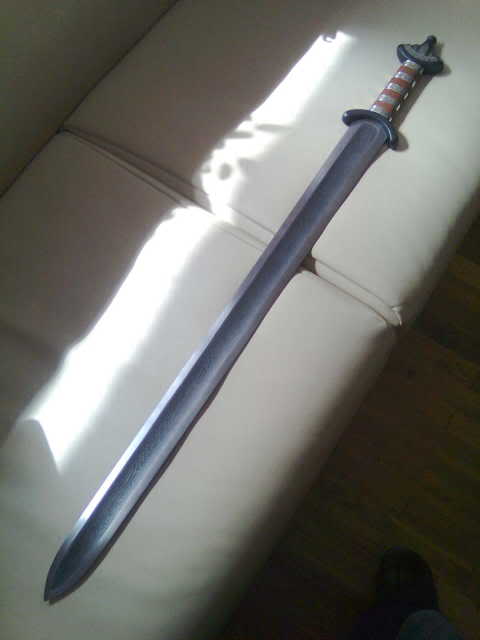
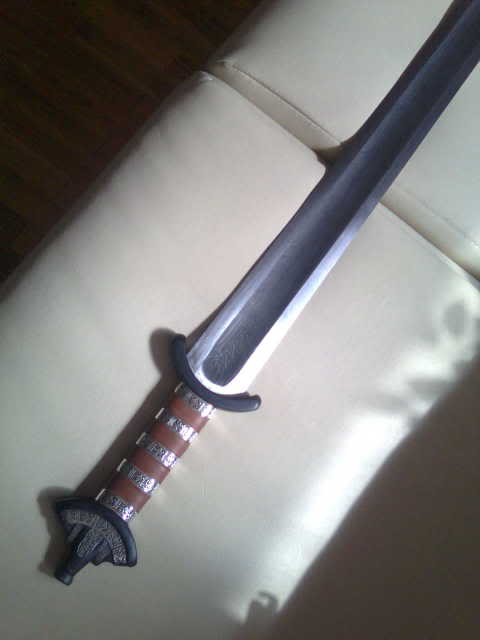
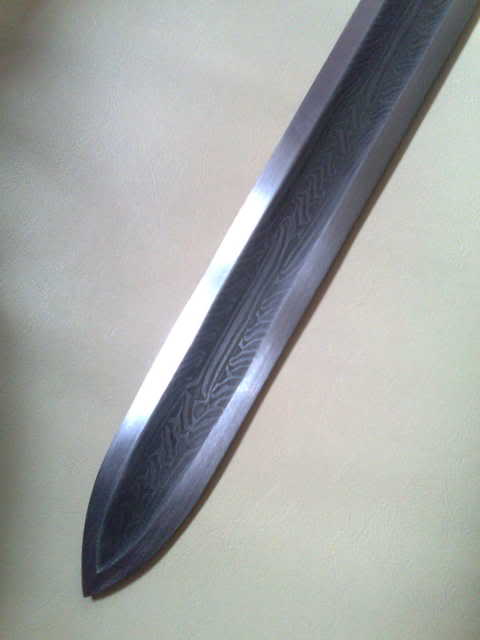
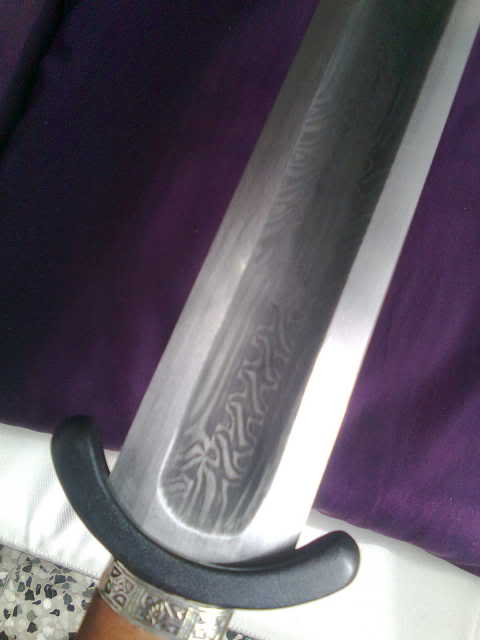
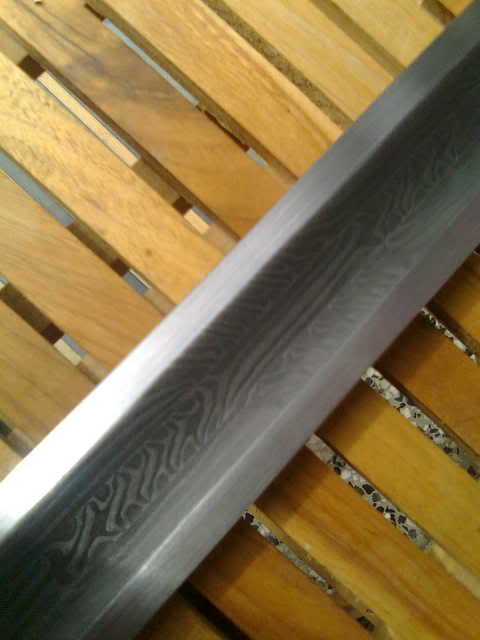
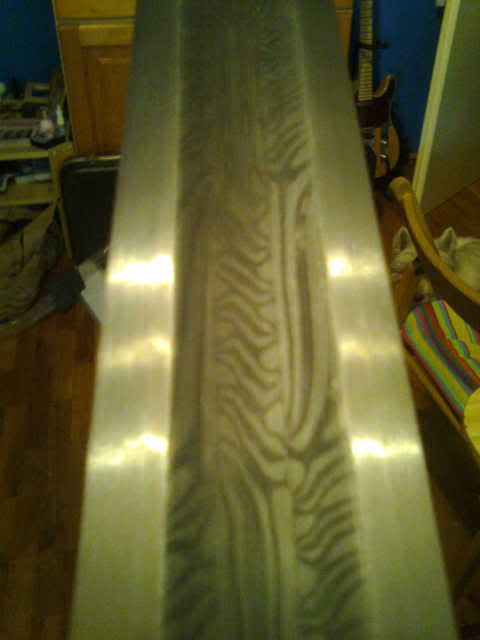















| Peter Lyon wrote: |
| If you want the hilt to be historically accurate there is no need to rehilt, unless it is to make the grip more comfortable, as this is a copy of the Gilling sword which is housed at the Yorkshire Museum in York, England; it is (from memory) 8th century. I got to see the original close up and this is a good copy, apart from the centre prong of the pommel maybe being a little long. Even the grip seems the right width, maybe a little thicker than the original, which only has the bands surviving, so the core material has to be speculative. |
| Timo Nieminen wrote: |
| A comparison:
Hanwei Saxon Sword: Blade 68cm, grip 4", about 20% profile taper. Gilling sword: Blade 69cm, grip 8.3cm, thickness at guard appears to be 6.7mm thick (somewhere from 6.6 - 6.8 mm), about 20% profile taper. Maybe about 30% distal taper? Hard to measure from the drawing, and the blade is corroded. Fuller on the Gilling sword goes under the lower guard; this is the biggest visual fail on the Hanwei sword. Size is close, grip is too long, but not outrageously so. |
| Viktor Abrahamson wrote: |
| The "dark paint" can be made if you put the patternwelded metal in vinegar over night.
I have done it on knives to see where/how my patterns ended up before grinding the blade. |